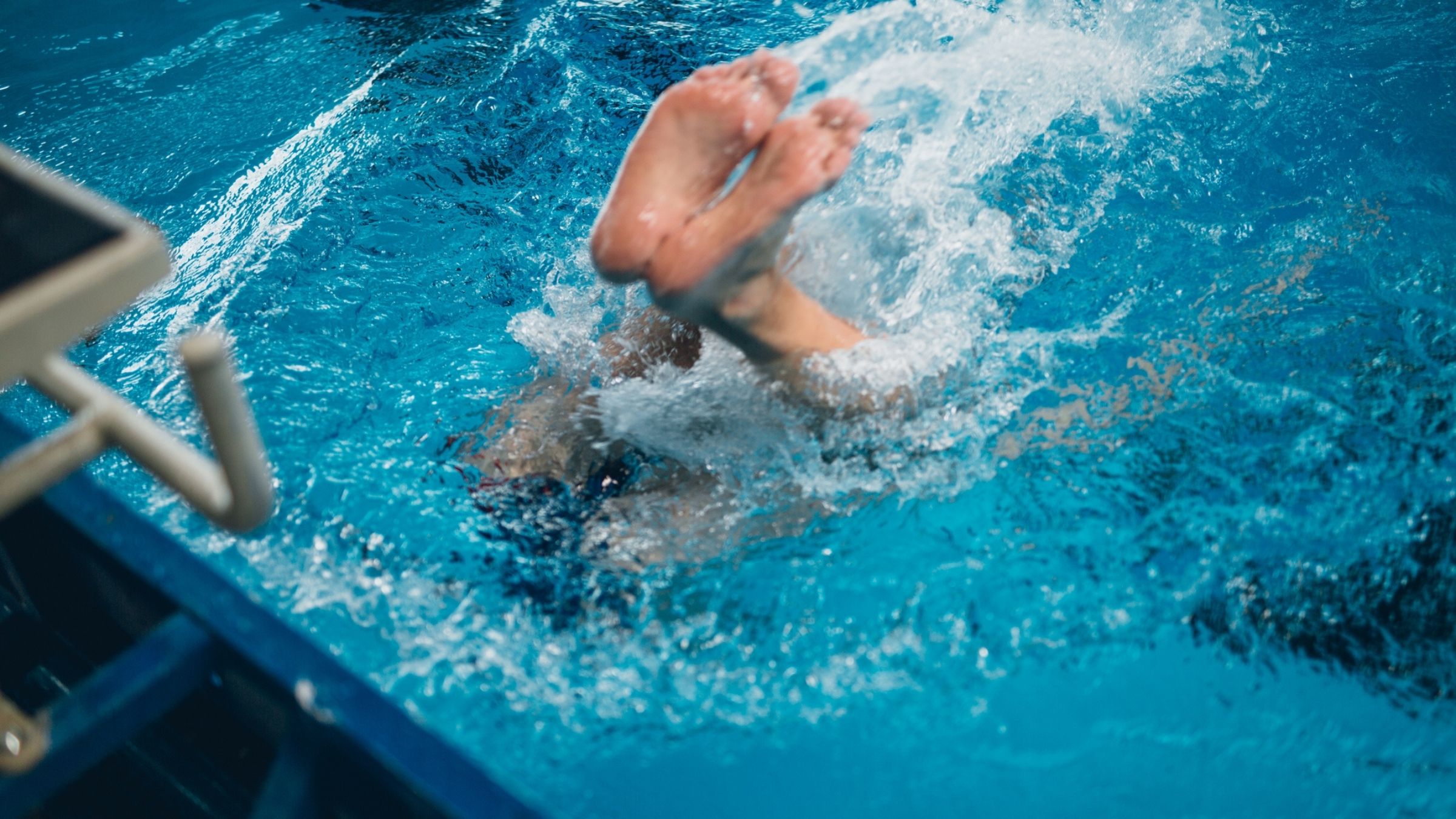Dear Coach: Should I Be Doing Flip Turns?

(Photo: Getty Images)
There are a lot of things about swimming that can be intimidating – and for many people, flip turns are often one of them. If you can execute a quick and efficient flip turn, then yes, you should absolutely be incorporating them into your training. Every time. At every wall. If you find you’re breathing too hard to execute a flip turn, then you’re working too hard, and you should ease up. However, if you can’t do a flip turn at all, or if your flip turn hasn’t progressed to the point where it is quick and efficient consistently, you should be executing a quick and efficient open turn instead of an inefficient flip turn.
Let’s step back for a moment and remember that 99% of all triathlons take place in open water, where there are no walls and therefore no need for flip turns. So flip turns aren’t a skill that matters on race day; their purpose is to improve the quality of your pool training by minimizing rest at the walls. That purpose can be accomplished just as well by using a quick and efficient open turn.
An open turn is a specific skill used in competitive swimming for butterfly and breaststroke turns, where flip turns are not allowed. The open turn is used to change direction at the wall, just as a flip turn is used for freestyle and backstroke. And while the open turn is used for butterfly and breaststroke in competitive swimming, there’s no reason the skill can’t be used in place of a flip turn for freestyle (and backstroke) in your triathlon swim training.
RELATED: A Complete Guide to Triathlon Swimming
How to do an open turn
Execute an open turn by following these steps:
- Touch the wall with one hand (it doesn’t matter which one, and as you learn the skill, grabbing the lip of the wall can be helpful).
- While allowing your body to continue its forward momentum toward the wall, compact the lower half of your body by bringing your knees up toward your chest and your feet toward the wall.
- Drop the arm that didn’t touch the wall underwater with a bent elbow, which will help rotate your body onto your side and begin to execute your change in direction.
- Bring your top hand, the one that touched the wall, above the water and then extend both arms out in front of you. At this point you should have completed your change in direction and your feet should be at the wall.
- Push off the wall with hands together, in a streamlined position.
Here’s a brief video to give you a demonstration.
If you’re new to swimming, check out our Beginner’s Guide for Learning How to Swim for Triathlon.
Alison Freeman is a co-founder of NYX Endurance, a female-owned coaching group based in Boulder, Colorado, and San Diego, California. She is also a USAT Level II-certified and Ironman University-certified coach as well as a multiple iron-distance finisher who has qualified for U.S. age group national championships four times.